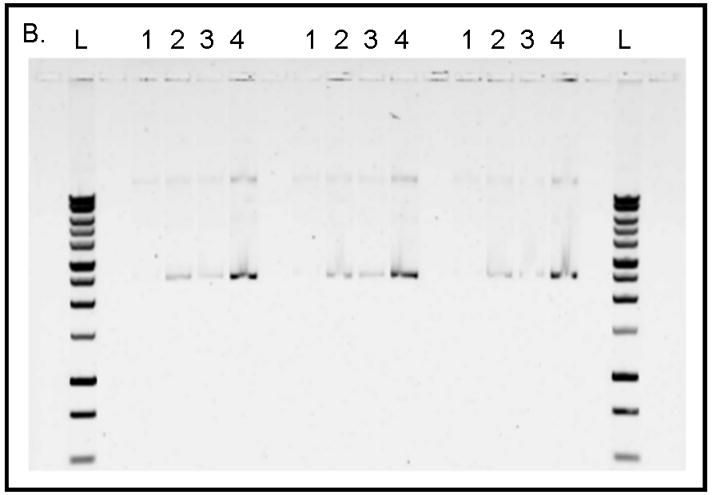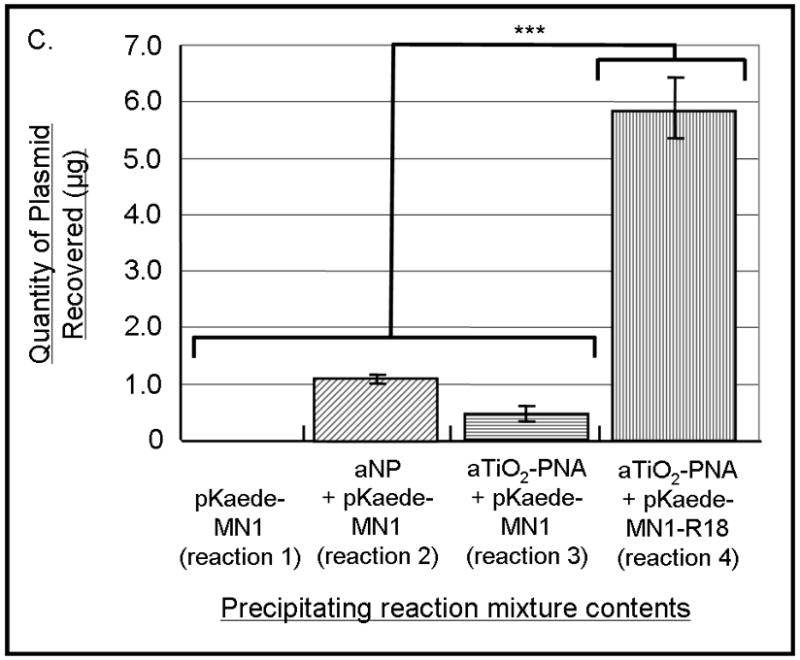Figure 5.



(A) Schematic of the experimental design for sample preparation for each well type on the gel is shown. Reactions of types 1, 2, and 4 contained plasmid pKaede-MN1-R18 (containing the insert that is complementary to the PNA sequence), in addition, reaction type 2 contained TiO2 nanoparticles and reaction type 4 also contained PNA-TiO2 nanoconjugates. Reaction type 3 contained plasmid pKaede-MN1 without PNA target sequence and PNA-TiO2 nanoconjugates. (B) Gel demonstrates the ability of PNA-TiO2 nanoconjugates to invade target-containing plasmid DNA pKaede-MN1-R18 (wells containing reaction type 4), at 37° C in 137mM sodium, much more avidly than the “empty” pKaede-MN1 plasmid (wells containing reaction type 3), thus allowing plasmid precipitation from a 100% aqueous solution. L = DNA ladder. In lanes 1 through 4, top bands are relaxed plasmids and bottom bands are supercoiled plasmids. Three separate experiments are shown on the same gel. (C) Semi-quantitative comparison of plasmid precipitation resulting from reaction types 2–4 is shown. *** = p < 0.001
